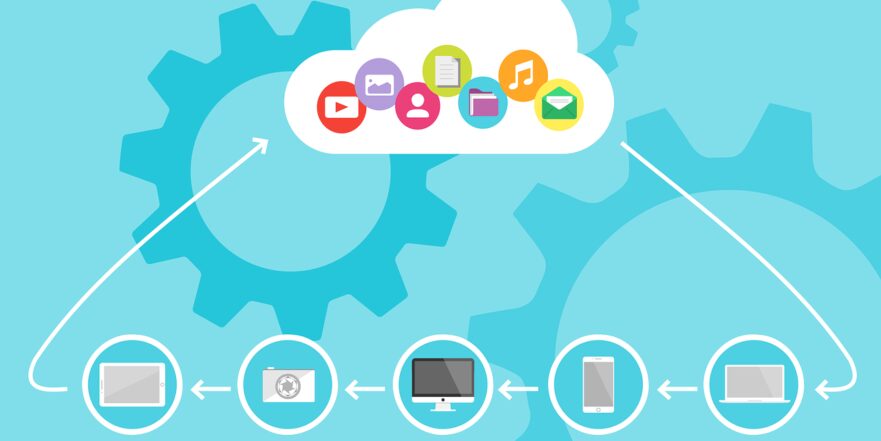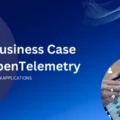DevOps and the Cloud: 5 Ways DevOps And the Cloud Will Come Together in 2020
By: samuelobrien
| March 15, 2024

More and more companies are beginning to turn to DevOps and the cloud as a way to improve their software teams. Whilst it used to be that development and operations were seen as separate, that view has now changed. Linking the two leads to better communication, faster development times, and the ability to stay on top of things.
With continuous integration, delivery, testing, and monitoring as key principles, it’s easier than ever to keep up with clients’ demands. However, the speed that a DevOps model can introduce is often reduced by access to the technology needed. It can quickly become expensive, too. Luckily, there’s been a movement towards cloud-based computing, and this is set to increase throughout 2020. Here are five ways you should expect to see DevOps and the cloud come together.
DevOps Automation In The Cloud
One of the major benefits of agile methodology and DevOps is how it frees your team up from repetitive tasks. Instead, they can focus on more creative problem solving. You can expect to see this benefit grow as companies begin to take advantage of the cloud for automation.
Instead of relying on your IT team to manually process data and test, you can take advantage of cloud-based services to do it for you. This also makes it easier for your team to access the results, no matter where they are! All you need is a Cloud PBX system. With a Cloud PBX system, fixed locations become a thing of the past. Automation also prevents the process slowing down as you hit certain parts of the cycle – especially testing and monitoring.
Having an automated system that’s accessible globally frees up teams to focus on more important tasks. They are also able to work from anywhere. Together, that gives you an innovative, flexible team.
Serverless Architecture
IT teams are often restricted by the availability of certain technology. This is particularly noticeable when scaling up an initial project. Scaling requires a large investment up front for technology that may not be needed in the long run. It can also lead to cases where application updates or improvement are hindered by having to wait on certain hardware.
To get the most out of the DevOps model, you need to provide your team with the most up-to-date technology available. This is where the cloud comes in.
Instead of having to invest in physical equipment and solutions, you can make use of serverless architecture. This means you don’t need to buy and maintain physical infrastructure. Instead, you can use the cloud. As cloud computing grows – with an expected surge of around $9 billion by 2023 – the services on offer will grow. This allows your DevOps team to move more of their work into the cloud.
This leads to an ability to scale per project, rather than having to scale your services in advance. If you need a larger amount of resources for the initial development stage, you can scale back once you’re further into the production cycle. Rather than ending up with unused servers, you just reduce your usage. It’s much easier to adjust – and cheaper too.
Hybrid Strategies For Maximum Impact
Of course, there are some things that are easier to do outside of the cloud. This is why we can expect to see an increase in hybrid strategies. Edge computing still has huge advantages in some areas.
For instance, it allows you to have more control over your own security rather than relying on an external service. It also has a lower latency, as it’s not calling out to a distant server over an internet connection. For many businesses, this latency difference will have little impact. Still, there are some fields where it will decide what aspects of development work within the cloud, and which don’t.
Of course, even without edge computing, many cloud computing services don’t cover everything you might need. This leads to the use of a multi-cloud strategy – with different things relying on different services. As an example, you may need to use a different host for your IVR system than your automated testing.
This could lead to two possible routes. Cloud services may specialize and DevOps teams work with truly multi/hybrid strategies, potentially needing to make use of further technology to ensure they’re linked appropriately. Or, alternatively, cloud services could broaden, and try to encompass as much as possible.
Data Meets Development Meets Operations
You may already be familiar with this concept – commonly called ‘DataOps’. Just as DevOps are increasing how much they operate in the cloud, so too is the data industry. Many data teams are taking advantage of similar tools, including the ability to automate data analysis on a global scale.
We can expect to see a further merger – with DataOps becoming more common, adopting the ideas behind DevOps in its own processing. This will allow the data industry to have easier access to things like collaborative tools – no matter where they’re based – version control, and standardized monitoring.
It will also have positive feedback into DevOps – giving teams in that area the ability to improve their own data processing and feed it back into development practices. As these links between data, development, and operations thrive, we can expect cloud services to begin to design tools specifically for DevOps and DataOps.
The Whole Company Follows?
The final thing to expect as DevOps and the cloud grow closer is for the rest of the company to follow. As DevOps begin to use cloud-native pipelines and containers, much of their data will be accessible solely through the cloud. That will include data on testing results, image repositories, and API paths.
Any other departments making use of these data sets will also need to be familiar with the cloud services offered. It might also provide the ideal motive to move to other cloud-based services, such as contact centre software or file storage.
It’s likely that, as DevOps and the cloud become more intertwined, so too will the rest of the company – leading to a broader process of digital transformation. This will improve communication between departments and allow for easier access to important information regardless of location.
As mentioned earlier, this can lead to a flexible and innovative workforce. Not only does this have immediate benefits, it will also feed back into the hiring process. If you’re making use of cloud-based solutions, you are no longer restricted to hiring based on locality. You can expect to see a culture shift alongside the technological shift.
2020 and Beyond…
With DevOps being one of the main drivers of development in cloud services, you should expect to see even more links being developed over the coming year. As well as these five examples, there are even more possibilities.
Whether it’s expanding how service meshes can be applied, specifically developed microservice monitoring pipelines, or the implementation of machine learning into development cycles, you should expect this to be an area of continual growth and change!
Learn how DevOps teams are continuously improving the performance of their applications with Stackify Retrace. With Retrace’s automated alerts and automated notifications, much of day-to-day maintenance and management becomes a truly hands-off process. This leaves time to focus on the more complex issues whether those be integrations testing, deployment tracking, or preventing server crashes.
Improve Your Code with Retrace APM
Stackify's APM tools are used by thousands of .NET, Java, PHP, Node.js, Python, & Ruby developers all over the world.
Explore Retrace's product features to learn more.
Learn More






